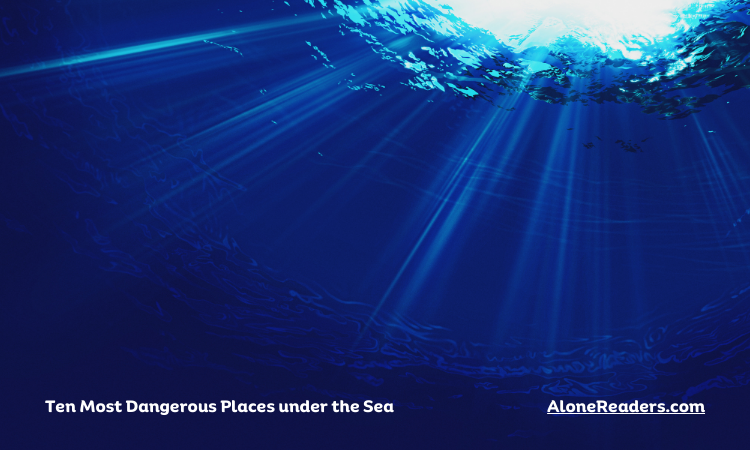
The vast expanse of the world's oceans, covering more than 70% of the Earth's surface, has long held a magnetic allure for explorers, adventurers, and those simply enchanted by the enigma of the deep blue. Beneath the glistening surface waves, the underwater realm unfolds as a universe teeming with vibrant marine life, historic shipwrecks, and some of the planet's most awe-inspiring topographical features. Yet, for all its beauty and wonder, the ocean also hides zones of peril — places where nature's raw power, unpredictable conditions, or concealed hazards lie in wait. Some of these dangers are well-documented, while others remain shrouded in mystery, tales of unexplained occurrences, and nautical legends. As we venture into an exploration of the ten most dangerous places under the sea, it's crucial to remember that the ocean, in all its majesty, demands our utmost respect and caution. Its most dangerous corners serve as humbling reminders of the force and unpredictability of the natural world.
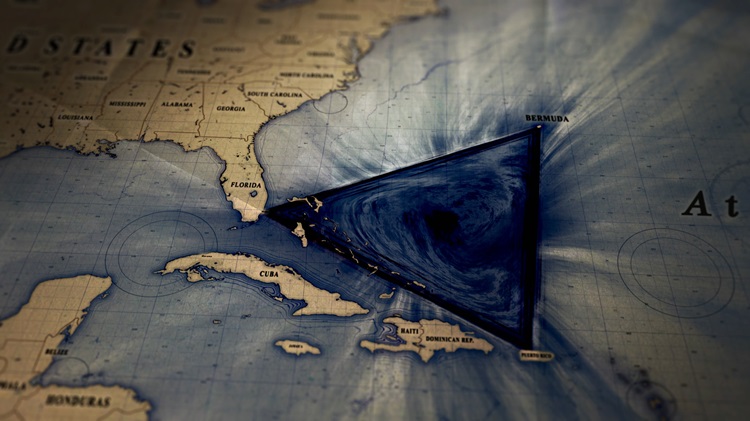
Bermuda Triangle | Photo: Bermuda Triangle
The Bermuda Triangle, also known as the "Devil's Triangle," is a loosely defined region in the western part of the North Atlantic Ocean. It is notorious for the alleged mysterious disappearances of ships, airplanes, and other vessels, as well as the unexplained phenomena reported within its boundaries. The Bermuda Triangle roughly forms a triangle with its three vertices at Miami, Florida; Bermuda; and San Juan, Puerto Rico.
The legend of the Bermuda Triangle has captured the public's imagination for decades, and numerous books, documentaries, and theories have been developed to explain its supposed dangers. However, it's important to note that many of the claims surrounding the Bermuda Triangle are based on anecdotal evidence, exaggerations, and sometimes outright misinformation. Despite the sensationalism, there is no scientific consensus supporting the idea that the Bermuda Triangle is inherently more dangerous than any other part of the world's oceans.
Several factors have contributed to the mystique surrounding the Bermuda Triangle:
Geographic Location: The Bermuda Triangle is situated in a heavily trafficked area of the Atlantic Ocean, making it more likely for accidents and disappearances to occur simply due to the volume of vessels passing through.
Weather Conditions: The region can experience rapidly changing and unpredictable weather patterns, including sudden storms and fog. These conditions can pose challenges to navigation and may have contributed to some incidents.
Human Error: Many incidents in the Bermuda Triangle can be attributed to human errors, such as navigation mistakes, equipment malfunctions, or inadequate training.
Natural Explanations: Some theories suggest that underwater methane hydrate eruptions or geological processes might cause sudden disruptions in the water, potentially sinking ships or causing turbulence for aircraft.
Sensationalism: Media outlets and popular culture have played a significant role in amplifying the mysteries of the Bermuda Triangle, often presenting unverified or exaggerated stories as fact.
In reality, the Bermuda Triangle is not officially recognized as a dangerous or hazardous area by any maritime or aviation authority. Thousands of vessels and aircraft safely traverse the region every year without incident. Furthermore, many of the high-profile incidents attributed to the Bermuda Triangle have been explained through conventional means, such as equipment failure, pilot error, or severe weather.
While the Bermuda Triangle remains a source of fascination and speculation, it is essential to approach its mysteries with a healthy dose of skepticism and rely on credible sources and scientific explanations when attempting to understand the events that have occurred within its boundaries.

Great Blue Hole, Belize | Photo: atlasobscura.com
The Great Blue Hole, located off the coast of Belize in Central America, is a natural wonder that has captivated the imagination of divers and scientists alike. This massive underwater sinkhole, often referred to as a marine sinkhole or submarine sinkhole, is renowned for its stunning beauty and unique geological features.
Location: The Great Blue Hole is situated near the center of Lighthouse Reef, which is part of the larger Belize Barrier Reef Reserve System. It lies approximately 43 miles (70 kilometers) from the mainland of Belize, near the town of San Pedro. The hole itself is circular and measures about 984 feet (300 meters) in diameter, with a depth that reaches around 410 feet (125 meters). The surrounding waters are crystal clear, offering excellent visibility for divers.
Why It's Dangerous: While the Great Blue Hole is undeniably captivating, it is also known to be a challenging and potentially dangerous dive site for several reasons:
Extreme Depth: The Great Blue Hole is quite deep, with its central point reaching around 410 feet (125 meters). Diving to such depths poses significant risks, including nitrogen narcosis (commonly known as "the bends") and the need for specialized training and equipment to handle the pressure changes.
Limited Marine Life: Although the Great Blue Hole is known for its striking beauty, it doesn't support the same diversity of marine life as other dive sites in the area. Divers may not encounter as much wildlife as they would in other parts of the Belize Barrier Reef.
Strong Currents: The surrounding waters can experience strong currents, making it difficult for inexperienced divers to maintain their position and control their descent/ascent properly.
Lack of Visibility: While visibility is generally good in the Great Blue Hole, it can deteriorate at greater depths. This reduced visibility can disorient divers and make navigation more challenging.
Technical Diving Required: Diving in the Great Blue Hole typically requires technical diving skills and equipment, including proper training in deep diving, decompression procedures, and the use of mixed gases. The site is better suited for experienced divers.
Decompression Risks: Due to the depth of the hole, divers often need to spend a significant amount of time at depth, increasing their risk of decompression sickness if they ascend too quickly.
Despite these challenges, many experienced divers are drawn to the Great Blue Hole for its breathtaking underwater scenery, including the unique stalactite formations that were once above sea level during the last ice age. Proper preparation, training, and a thorough understanding of the potential risks are essential for those who wish to explore this natural wonder safely. Diving with experienced guides who are familiar with the site can also enhance the overall safety of the experience.

Jacob's Well, Texas | Photo: treehugger.com
Jacob's Well is a natural wonder located in the Texas Hill Country near the town of Wimberley, Texas, in the southwestern United States. It is a spring-fed pool that has become famous for its mesmerizing beauty and its reputation for danger. Jacob's Well is not only a popular destination for tourists and outdoor enthusiasts but also a place that has claimed the lives of several divers and swimmers over the years, earning it a somewhat ominous reputation.
Location: Jacob's Well is situated in the heart of the Texas Hill Country, approximately 35 miles southwest of Austin, the state capital. It is part of the Jacob's Well Natural Area, which spans around 81 acres and is managed by the Hays County Parks Department. The well itself is a karstic spring, meaning it is formed in limestone, and it serves as the primary source of Cypress Creek, a tributary of the Blanco River.
Why it is Dangerous: While Jacob's Well is undoubtedly stunning and attracts many visitors, it's important to recognize the dangers associated with this natural wonder:
Deceptively Deep: The most significant danger of Jacob's Well lies in its deceptive depth. From the surface, it may appear to be a shallow pool, but it reaches a depth of up to 140 feet (42 meters). The sudden drop can catch swimmers and divers off guard, leading to accidents and injuries.
Narrow Passages: Below the surface, there are intricate underwater passages and caves that extend for hundreds of feet. These passages can be dark, narrow, and challenging to navigate, making it easy for divers to become disoriented or trapped.
Fast-Flowing Currents: The spring-fed waters of Jacob's Well flow at a constant rate, creating strong underwater currents. These currents can sweep swimmers and divers into tight spaces or push them deeper into the well, making it difficult to surface safely.
Inexperienced Divers: Jacob's Well has drawn inexperienced divers who are not adequately trained for the challenges it presents. The lack of experience can lead to panic and accidents underwater.
Previous Fatalities: Tragically, Jacob's Well has claimed the lives of multiple divers and swimmers over the years. These accidents serve as a stark reminder of the potential dangers that lurk beneath its picturesque surface.
To mitigate these risks, officials have implemented safety measures, including restricted access and rules for diving. Divers are required to obtain permits and have a dive partner, and they must be certified to dive in caves. Swimming is allowed but discouraged beyond a certain depth.
Jacob's Well in Texas is a breathtaking natural wonder that holds both allure and danger. Its deceptively deep waters, intricate underwater passages, strong currents, and history of accidents make it a place that demands caution and respect from those who wish to explore its depths. Visitors should be aware of the risks and take appropriate safety precautions to enjoy this unique natural marvel safely.
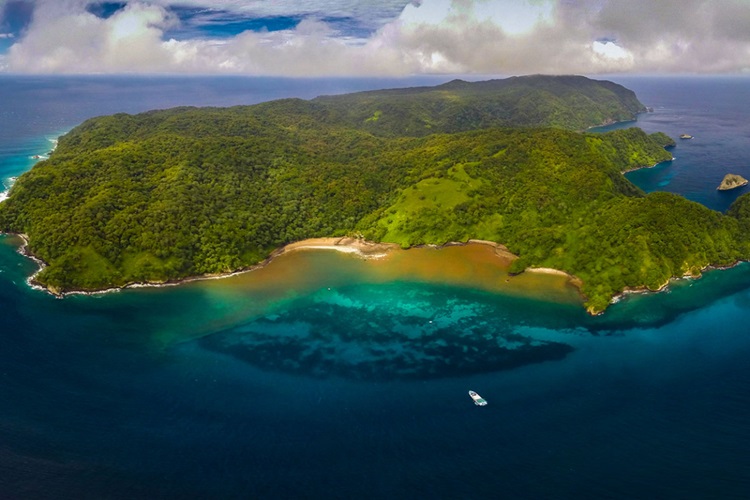
Cocos Island, Costa Rica | Photo: ksbw.com
Cocos Island, located off the Pacific coast of Costa Rica, is a remote and mesmerizingly beautiful destination known for its unique biodiversity, stunning landscapes, and its reputation as a diver's paradise. However, it is also renowned for its dangerous aspects, making it a subject of fascination for adventure seekers, researchers, and environmentalists alike.
Location: Cocos Island, officially named Isla del Coco, is situated approximately 550 kilometers (342 miles) southwest of the Costa Rican mainland. It is the largest uninhabited island in the world, covering an area of about 24 square kilometers (9.3 square miles). Cocos Island is part of the Cocos Island National Park, a UNESCO World Heritage site, and is recognized for its rich marine life and pristine ecosystems.
Why it is Dangerous:
Strong Currents and Rough Seas: The waters surrounding Cocos Island are known for their treacherous currents and unpredictable weather patterns. The convergence of several oceanic currents in this region can create challenging conditions for both divers and sailors. This makes navigation and diving around the island risky, especially for those without experience in such demanding environments.
Shark-Infested Waters: Cocos Island is renowned for its population of large predatory sharks, including hammerhead sharks, tiger sharks, and Galapagos sharks. While these creatures are a major attraction for divers and researchers, their presence also adds an element of danger. Encounters with these powerful animals can be exhilarating but should be approached with caution and respect.
Isolation: The remote location of Cocos Island means that access is limited, and help in case of emergencies can be hours or even days away. There are no permanent settlements on the island, and medical facilities are absent. This remoteness can be a significant factor in the perceived danger of visiting the island.
Conservation Regulations: To protect the fragile ecosystems on and around the island, strict conservation regulations are enforced. Visitors must adhere to guidelines that limit their impact on the environment. Failure to comply with these regulations can result in significant fines and penalties, adding an element of danger for those who choose to disregard the rules.
Historical Reputation: Cocos Island has a storied past as a hideout for pirates and treasure hunters. The allure of hidden treasures has led to numerous expeditions, some of which have ended in misadventure or disaster. This history of treasure hunting adds an aura of danger to the island's reputation.
Despite the challenges and potential dangers, Cocos Island remains a sought-after destination for experienced divers, conservationists, and researchers. The island's unique marine life, including its shark populations, has drawn the attention of scientists and enthusiasts from around the world. However, anyone considering a visit to Cocos Island should be well-prepared, physically fit, and experienced in handling the challenges that come with exploring this remote and wild natural paradise.

Blue Holes of the Bahamas | Photo: floridamuseum.ufl.edu
The Blue Holes of the Bahamas are a mesmerizing natural wonder found in the crystal-clear waters of the Bahamas, particularly in the Andros Island region. These underwater sinkholes are known for their stunning deep blue color and the mystery that surrounds them. While they are a popular attraction for divers and researchers, they also have a dangerous side that makes them both alluring and treacherous.
Location: The Bahamas is an archipelago consisting of numerous islands in the Atlantic Ocean, and the Blue Holes are primarily found in the Andros Island area. Andros Island is the largest of the Bahamian islands and boasts an extensive network of underwater caves, caverns, and Blue Holes. Some of the most famous Blue Holes include Dean's Blue Hole, which is the world's deepest known saltwater Blue Hole, and the mysterious inland Blue Holes scattered throughout the island.
Why They Are Dangerous:
Depth: One of the primary reasons Blue Holes are dangerous is their incredible depth. Dean's Blue Hole, for instance, plunges down to a depth of approximately 663 feet (202 meters). Such depths can be intimidating even for experienced divers, as the increased pressure can lead to various risks, including nitrogen narcosis and decompression sickness if proper precautions are not taken.
Darkness: As you descend into a Blue Hole, natural light diminishes rapidly. The absence of sunlight can disorient divers and make it difficult to gauge depth or direction. This lack of visibility poses a significant risk, especially when combined with the deep, narrow channels found within many Blue Holes.
Complexity: Blue Holes often have intricate underwater cave systems, which can be challenging to navigate. These caves can be twisting and labyrinthine, making it easy for divers to become disoriented or trapped. Entrances to these caves are sometimes small and can become obstructed, complicating escape in case of an emergency.
Strong Currents: The Bahamas experiences strong tidal currents, which can create hazardous conditions around Blue Holes. These currents can pull divers into the deep, making it difficult to swim against them, potentially leading to exhaustion or even accidents.
Inexperience: Many divers are drawn to the beauty of the Blue Holes without the necessary training and experience for deep-water diving. This lack of preparedness can lead to accidents, injuries, or fatalities.
Despite their dangers, the Blue Holes of the Bahamas continue to captivate divers and researchers alike. They offer a unique opportunity to explore some of the Earth's most enigmatic underwater features and have yielded valuable insights into the Earth's geological history. However, anyone wishing to explore these natural wonders should do so with caution, proper training, and a healthy respect for the inherent risks they present. Safety measures, such as diving with experienced guides and using appropriate equipment, are essential to enjoy these underwater treasures while minimizing the dangers they pose.
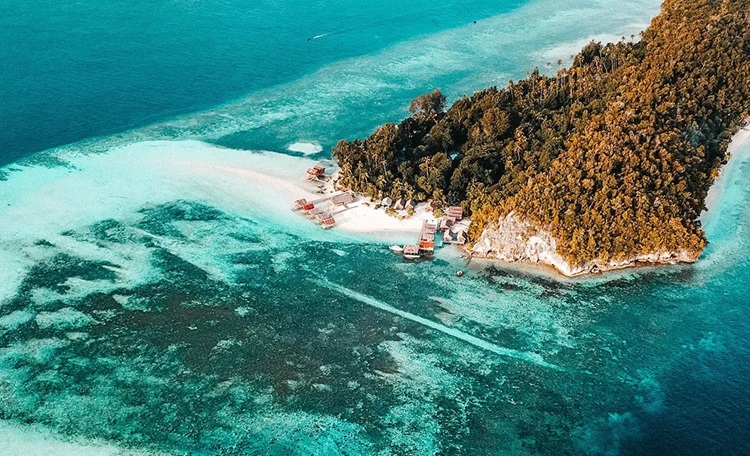
Cape Kri, Indonesia | Photo: elsacyril.com
Cape Kri, located in Raja Ampat, Indonesia, is renowned as one of the most biodiverse and picturesque diving spots in the world. Situated in the heart of the Coral Triangle, this remote and pristine area attracts marine enthusiasts, divers, and nature lovers from all over the globe. However, while Cape Kri is a haven for underwater exploration and adventure, it can also be a potentially dangerous location due to various factors.
Location: Cape Kri is situated on the island of Kri, which is part of the Raja Ampat archipelago in West Papua, Indonesia. This region is known for its remote and isolated location, with lush rainforests, crystal-clear waters, and vibrant coral reefs that host an incredible array of marine life.
Why It Is Dangerous:
Strong Ocean Currents: One of the main dangers at Cape Kri is the presence of strong ocean currents. The convergence of several major currents in the region, such as the Halmahera and Pacific currents, can create challenging and unpredictable conditions for divers. These currents can be deceptively strong and may pose a risk to inexperienced divers who are not familiar with the local underwater terrain.
Remote Location: Cape Kri is located in a remote and isolated part of Indonesia, far away from major medical facilities and emergency services. In case of accidents or emergencies, it can be difficult to access immediate medical care or assistance. Divers should be well-prepared and have contingency plans in place.
Dive Depth: While Cape Kri offers incredible opportunities for deep-sea diving, the depths can be perilous for divers who lack experience or proper training. Some dive sites in the area can reach depths of over 30 meters (100 feet) or more, which can increase the risk of decompression sickness and other diving-related injuries if not managed carefully.
Marine Life Hazards: While the marine life at Cape Kri is stunning and diverse, it can also pose certain risks. Some species of marine life in the area, such as reef sharks and stonefish, can be potentially dangerous if disturbed or provoked. Divers need to exercise caution and respect the natural environment.
Weather and Climate: The weather in Raja Ampat can be unpredictable, with sudden storms and rough seas. Divers should be aware of the local weather patterns and always check weather forecasts before embarking on dives. Sudden changes in weather can make diving conditions hazardous.
To mitigate these risks, divers who wish to explore Cape Kri should ensure they are well-trained and experienced, preferably with advanced diving certifications. Additionally, it's crucial to dive with reputable dive operators who are familiar with the local conditions and can provide safety guidance. Adequate preparation, adherence to safety protocols, and respect for the fragile marine ecosystem are essential for a safe and memorable experience at Cape Kri.
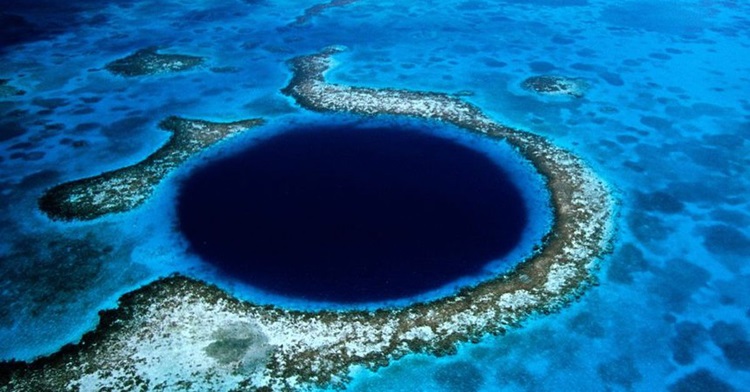
Samaesan Hole, Thailand | Photo: 9news.com.au
The "Samaesan Hole" in Thailand is a popular but notoriously dangerous diving location located in the Gulf of Thailand, not far from the coastal town of Samaesan in Chonburi Province. This underwater feature is known for its mesmerizing beauty and rich marine life, but it has also earned a reputation as a treacherous dive site, primarily due to its unique geological characteristics and challenging conditions.
Location: The Samaesan Hole is situated in the Gulf of Thailand, which is known for its warm waters, vibrant coral reefs, and diverse marine ecosystems. The specific location of the Samaesan Hole is just off the coast of Samaesan, a picturesque fishing village located approximately 150 kilometers southeast of Bangkok. This proximity to a major urban center makes it a popular destination for divers from around the world.
Why it is Dangerous:
Depth and Bottomless Feeling: The Samaesan Hole earned its name due to its remarkable depth. It is essentially a vertical underwater chasm that descends to incredible depths, often exceeding 80 meters (260 feet). Divers who venture into the hole can experience a sensation of descending into a seemingly bottomless abyss. The extreme depth can lead to issues with nitrogen narcosis, a condition known as "rapture of the deep," which can impair divers' judgment and coordination.
Strong Currents: The Samaesan Hole is known for its unpredictable and strong underwater currents. These currents can change rapidly and can carry divers away from their intended path or make it difficult to maintain buoyancy. Navigating these currents requires advanced diving skills and experience.
Limited Visibility: The visibility in the Samaesan Hole can vary greatly depending on the weather, tides, and other factors. In some cases, visibility can be reduced to a few meters, making navigation and communication with other divers challenging.
Technical Diving Requirements: Due to its extreme depth, diving in the Samaesan Hole often requires technical diving skills and equipment, such as mixed-gas diving and rebreathers. Technical divers are exposed to additional risks associated with complex equipment and gas management.
Hazards in the Abyss: The hole's depths are home to various underwater hazards, including sharp coral formations, undersea caves, and potentially dangerous marine life. Divers must exercise caution to avoid these hazards.
Isolation: The remote location of the Samaesan Hole means that assistance may not be readily available in case of emergencies. This isolation can magnify the risks associated with diving in this area.
In summary, while the Samaesan Hole offers a unique and breathtaking underwater experience, it is also a location that demands a high level of diving proficiency and preparation. Divers who choose to explore this site should possess advanced training, experience with deep diving, and an acute awareness of the risks involved. Proper equipment, thorough dive planning, and the presence of experienced dive guides can help mitigate some of the dangers associated with this fascinating but perilous dive site.
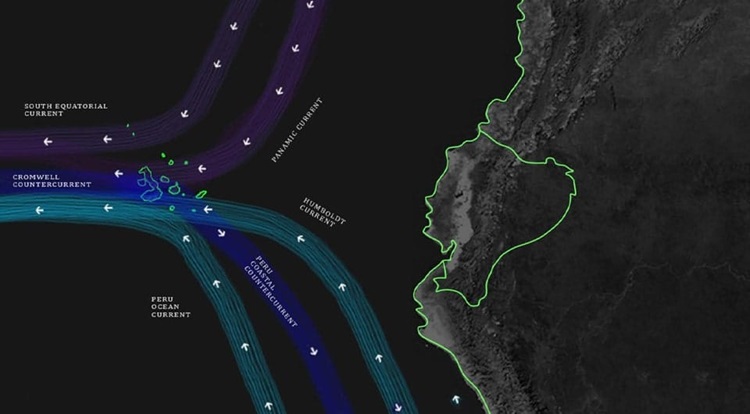
Humboldt Current | Photo: quasarex.com
The Humboldt Current, also known as the Peru Current, is a cold oceanic current that flows northward along the western coast of South America. It is one of the most important ocean currents in the world due to its significant impact on the climate, ecology, and economy of the region. This current is named after the Prussian naturalist and explorer Alexander von Humboldt, who extensively studied the South American coast during his expeditions in the early 19th century.
Location: The Humboldt Current originates in the southern part of Chile, near the region of Cape Horn, and extends northward along the western coast of South America, reaching as far north as northern Peru. Its influence can also be felt in the waters off Ecuador and Colombia. The current is characterized by its cold, nutrient-rich waters, which are a result of the upwelling of deep, cold oceanic water along the continental shelf.
Why it is Dangerous:
Cold Water Temperature: The Humboldt Current carries cold water from the depths of the ocean to the surface along the South American coast. This cold water can create challenging conditions for maritime activities, as it can lower sea surface temperatures significantly. Cold water can be dangerous for swimmers, divers, and fishermen who are not adequately prepared for the temperature drop, leading to hypothermia and other cold-related health issues.
Strong Winds and Storms: The Humboldt Current is associated with strong winds and frequent storms, especially during the austral (southern hemisphere) summer months. These weather conditions can create hazardous conditions for sailors and fishermen, making navigation and fishing operations more perilous.
Upwelling and Nutrient Richness: While the upwelling of nutrient-rich water is ecologically beneficial for marine life in the region, it can also pose a danger to ships. The increased abundance of marine organisms, such as phytoplankton and krill, can attract larger predators like whales, sharks, and sea birds, potentially leading to collisions or other risks for vessels.
Impact on Climate: The Humboldt Current plays a crucial role in shaping the climate of the coastal regions it influences. Its cold waters can lead to the development of coastal fog, known as "garúa," which can reduce visibility for drivers and increase the risk of accidents on coastal roads.
Fisheries and Economic Impact: While the Humboldt Current's nutrient-rich waters support thriving fisheries in the region, the dynamic nature of the current can also lead to fluctuations in fish populations. This can have economic implications for the fishing industry, causing periods of abundance followed by scarcity, which can be challenging for local communities that rely on fishing as a primary source of income.
In summary, the Humboldt Current is a powerful oceanic current with both ecological and economic significance in the region. While its nutrient-rich waters support a diverse marine ecosystem and a thriving fishing industry, its cold temperatures, strong winds, and associated weather patterns can pose dangers to maritime activities and navigation along the western coast of South America. It is essential for those operating in these waters to be well-prepared and knowledgeable about the unique challenges posed by the Humboldt Current.
Plunging into the heart of the ocean reveals a world of contrasts. Amidst the stunning coral reefs, the ballet of aquatic creatures, and the tranquility of the deep, there exist places that challenge even the most seasoned explorers. These ten dangerous locations under the sea underscore the ocean's dual nature: a source of endless fascination and, simultaneously, a realm of potent danger. Whether it's the formidable currents, the predators that lurk, the depths that beckon, or the mysteries that confound, these sites are testaments to the power and enigma of the marine world. As we push the boundaries of exploration and seek out the planet's extremities, it's imperative to approach the ocean with a blend of curiosity and caution. For in understanding and respecting its might, we not only ensure our safety but also deepen our appreciation for this vast, magnificent, and occasionally treacherous wonder that is the sea.